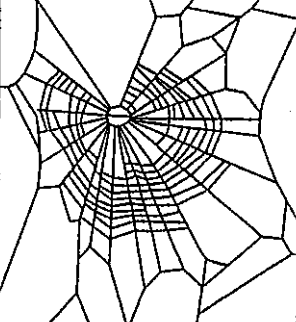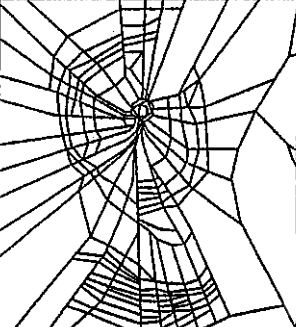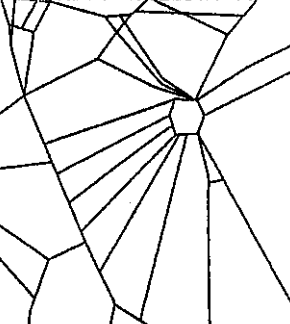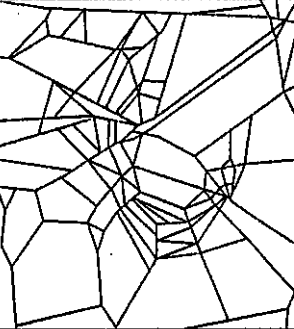Spiders on Drugs - Webs spun under the influence of psychoactive drugs.





In 1948, the zoologist Hans Peters wanted to film spiders making their webs. However, spiders only construct their webs at night and Peters did not want to spend his nights filming. So he thought feeding the spiders with various drugs diluted in sugar water might change their nocturnal habits. Together with a coleague, the pharmacologist Peter Witt, he gave the spiders morphine, cannabis, LSD, peyote mushroom extract, benzedrine and scopolamine. and caffeine. None of these substances caused the spiders to spin during the daytime. The experiment failed but the two scientists did note a change in the style of web-making. Caffeine caused them to build smaller webs, cannabis seemed to make them forget to build the centre of their webs, scopolamine made them lose direction, LSD didn't seem to provoke any effect at all1. Peter Witt carried on with the experiments, testing many other substances including caffeine.
In the mid-1990s, scientists from NASA continued these studies on the common house spider Araneus diadematus, hoping that their web structures would provide a cheaper insect model than the classic animal models (mouse, rabbit, pig, monkey) used to test drugs before administering them to humans. The pictures here are taken from the short report they published (David A. Noever et al, Using Spider Web Patterns to Determine Toxicity, NASA Technical Briefs, MFS-28921, vol. 19, No. 4, p. 82., April 1995.).
The "hub and spokes" pattern, typical of the common garden spider clearly changes depending on the type of chemical they consumed. The NASA scientists tried to analyse these alterations using computer analysis.
- The structure of the web spun by the spider under the influence of marijuana is pretty close to the conventional one, but is unfinished.
- The benzedrine web is meticulous in places but has huge gaps.
- The chloral hydrate web is a stray collection of strands.
- However the slipshod, disorderly structure made by the spider intoxicated by caffeine displays only a vague resemblance to a hub and spoke pattern.
Secondary source and quotes above from Bennet Alan Weinberg and Bonnie K. Bealer in The world of caffeine, pub. Routledge, New York & London, 2001. Other information from an article by Luke Sumpter on the Zamnesia site.
1Previous research on the subject had already intriguingly shown the benefits of small quantities of LSD "All the drugs tested reduced web regularity except for small doses (0.1 - 0.3 µg) of LSD, which resulted in more ordered webs." in Rainer F. Foelix, "The Biology of Spiders" [Biologie der Spinnen, pub Georg Thieme Verlag KG, Stuttgart, Germany, 1979, 1992.], 3rd edition in English, Oxford University Press, 2011.